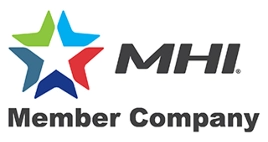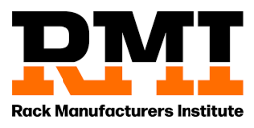Push-back racking is a storage solution that combines increased density with higher selectivity. It is best suited to warehouses and other industrial or commercial settings. If you are searching for a new solution for storage in your distribution center or similar operation, you might want to consider this efficient, versatile system.
How Does Push-Back Racking Work?
Push-back racking works by allowing wheeled carts to be placed on a pitched track within a bay of racking. These carts then loaded with a pallet by means of a lift truck. Once the first pallet is loaded, the lift truck picks up the next pallet and uses it to “push back” the pallet load on the first cart, which reveals the subsequent cart underneath. The process is then repeated until all carts are used, while the final product load being stored sits on the pitched track itself.
To unload the system, the first pallet is removed and the remaining pallets in the system, stored on the carts, roll forward by means of gravity. This is repeated until all pallets are removed. Whether loading or unloading, all product access is done from the face position of the rack.
Push-back racking offers greater storage than a standard pallet rack system, while allowing for greater selectivity than other deep lane solutions like Drive-In. It makes a smart choice for distribution centers and warehouses with high SKU counts, product volumes and throughputs.
What are the Advantages of Push-Back Racking?
The benefits of push-back racking go beyond efficiency. There are many other reasons to consider these versatile racks, including:
- Greater space optimization. Push-back racks can allow for 2-3 times more storage than standard shelving.
- Works with most standard lift truck equipment.
- Increased put away and picking productivities.
Learn more about push-back racking and Frazier’s patented Glide-In® Push Back system by contacting frazier@frazier.com or calling (800) 859-1342, Option #8.






